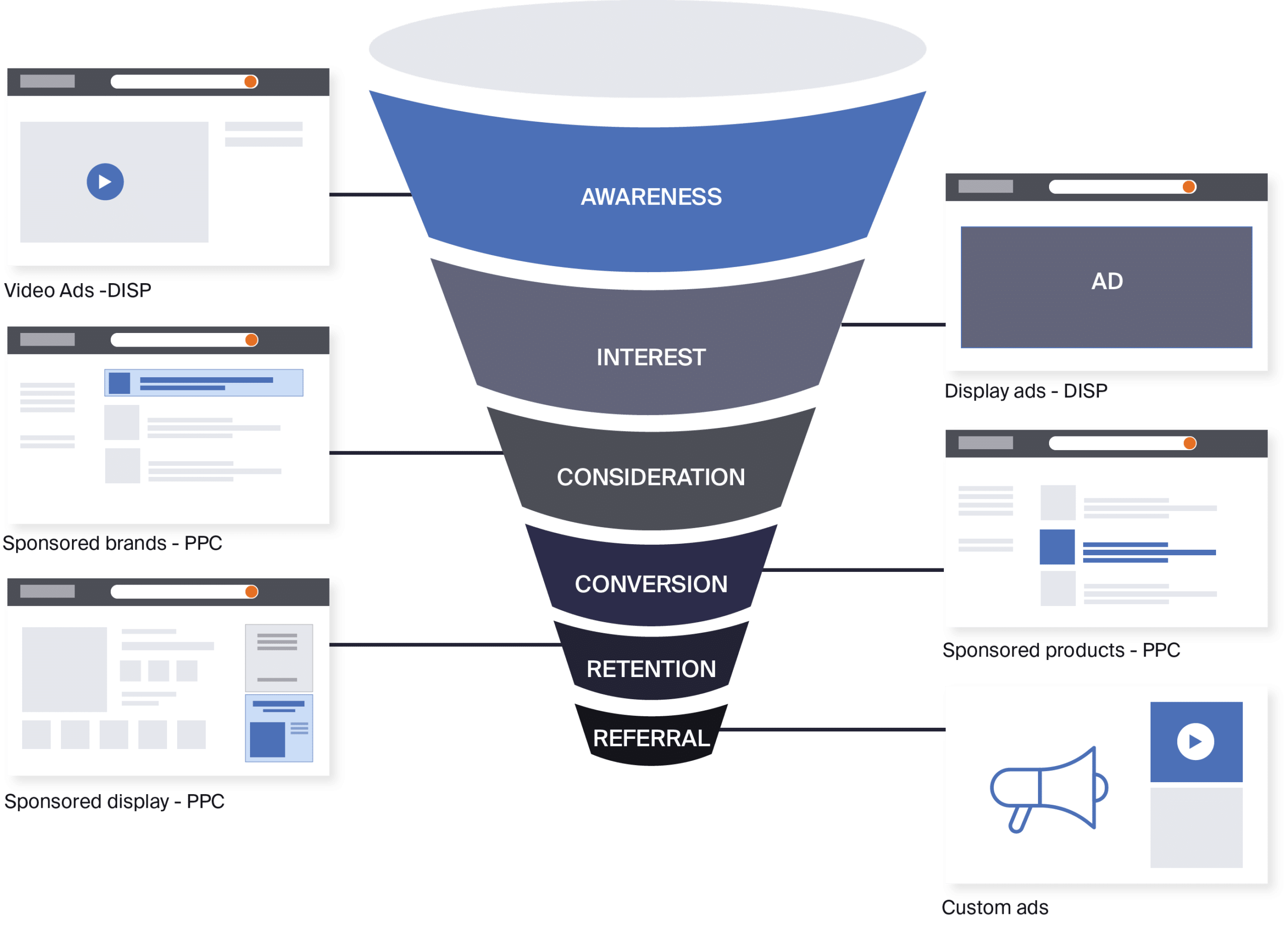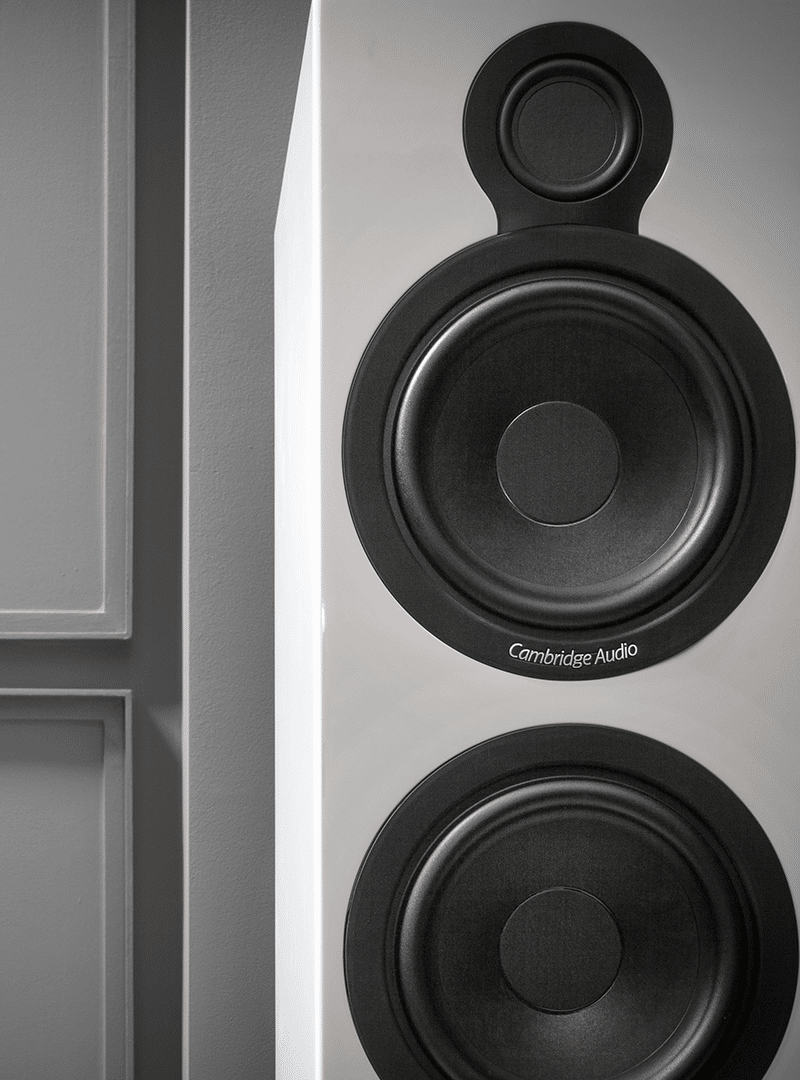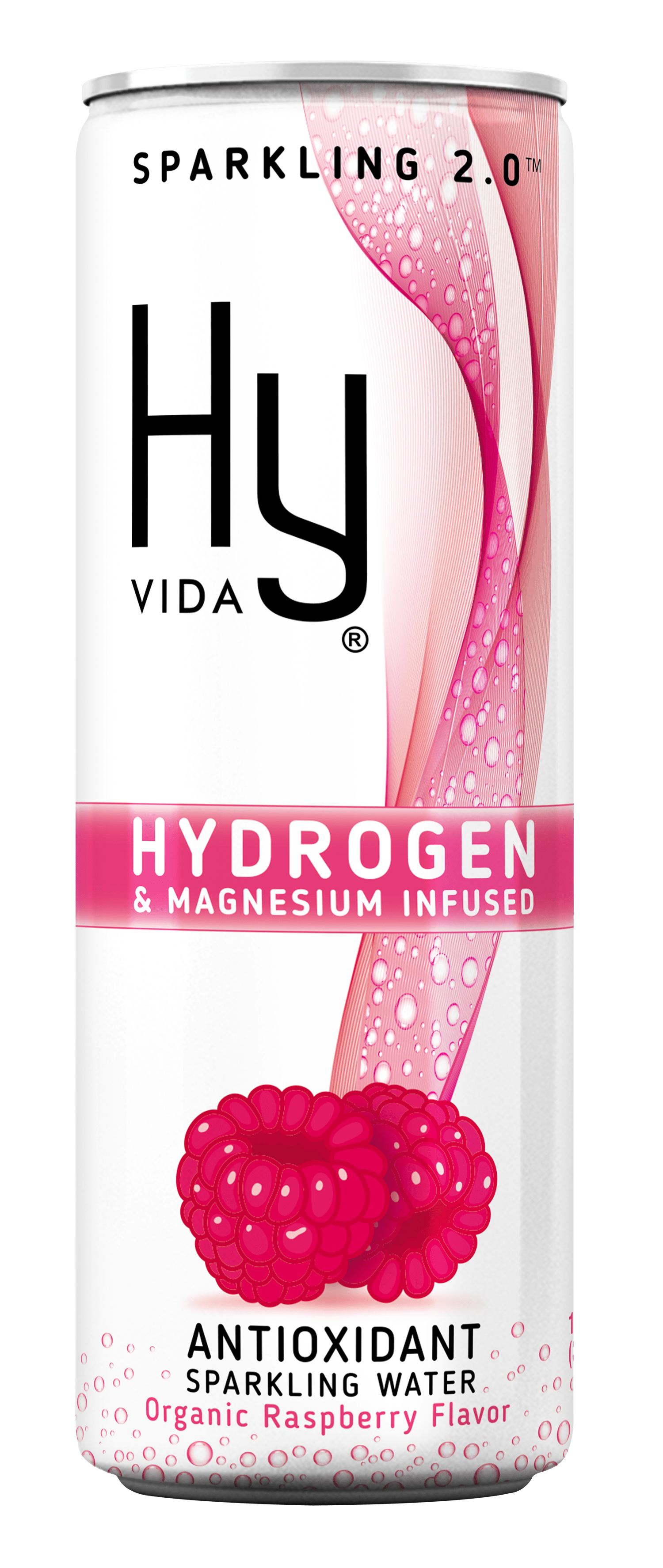
Amazon Referral Bonus Program: A Complete Guide for Sellers
Discover how the Amazon Brand Referral Bonus can increase your earnings by rewarding external traffic. Explore benefits, tips, and strategies for success.

While advertising on Amazon is not a requirement, running ads significantly improves organic SEO rankings. The relationship between paid advertising and SEO is closely linked in the Amazon A10 algorithm.
A solid advertising strategy based on rigorous keyword research will vastly improve both your organic and paid search rankings.
Amazon has advertising platforms that accommodate sellers with a budget as low as $1 a day in Sponsored Products, Sponsored Brands and Display Ads to over $35,000 monthly in the DSP. (Demand Side Platform). You can advertise on Amazon with your Seller Central account, Vendor Central Account or KDP account.
What is Amazon DSP?
Amazon DSP is a programmatic advertising platform that gives sellers in and outside of the marketplace the ability to serve display ads (e.g. banners) and video ads both on Amazon and on other websites/mobile apps devices that are owned by the company or partners.
The platform enables advertisers to leverage Amazon’s massive amount of first-party data on shopper behavior and purchase habits to serve ads and drive users back to Amazon listings or off Amazon websites.
Amazon Sponsored Products are similar to display ads in Google. Amazon Sellers can promote specific products on search results pages, and product detail pages, using sponsored product ads. These ads are the most popular among sellers for obvious reasons; when you have specific SKUs that perform well or fall into trending categories then you can boost visibility and sales by bidding on specific keywords related to these items.
All you have to do to get going with these Amazon ads is select the product(s) you want to promote, create the ad, and set your bid/daily budget. From there, the product ad will show up next to similar products in search results.
Sponsored Brand ads typically appear at the top of Amazon search results, above the Sponsored ads, or can sometimes appear within the search results. When shoppers click your logo, they will be directed either to your storefront or a custom landing page. When they click on a product, they will be sent to that specific product page.
When it comes to formatting your ads, Amazon offers three options: Product Collection, Store Spotlight, and Video.
The Product Collection format is great for boosting the visibility of products with lower organic or sponsored product ad impressions. You can feature up to 3 products in the ad and link to either to the product listing on your branded storefront or to a landing page that only includes the products in the ad. Linking to a landing page is a great way to increase sales on under-performing skus. If you do use the Product Collection format to increase visibility of under-performing products, include a high-performing product in the mix to improve your Click Through Rate (CTR) on the ad.
The Store Spotlight is great for brands with a diverse sku catalogue that features items in multiple categories. In this format you can feature up to three full product categories as opposed to single products. When a shopper clicks on a product category, they will be taken to that product category within your Amazon storefront.
The Video format includes a 15-30 second video that auto plays without sound. These ads are eye-catching and take up a lot of visual real-estate on the page. Video can be a big upfront investment, but it can be a major competitive advantage.
Sponsored Display Ads are the new, modified version of Amazon’s former Product Display Ads (PDAs). They allow you to target shoppers both on and off-Amazon, which is key to gaining more visibility within the new A10 algorithm, which prioritizes off-Amazon traffic to your listings.
Sponsored Display ads target shoppers based on shopping history and audience profiles as opposed to keywords. You can still set your own budget, bidding against other sellers for ad placement (as opposed to keywords). Amazon offers two main options for targeting browsers: product targeting and audience building.
Product targeting allows you to target shoppers browsing similar products to yours. You can have your product advertised on a competitors’ listing or on complementary product listings. For example, advertise your barbeque sauce on a listing for smokers.
With audience-building you can create custom audiences based on a number of factors. You can choose to remark to shoppers who have viewed your product details page or products similar to yours. You can also build audiences based on interests, lifestyle, or life stage.
The great thing about Sponsored Display ads is that shoppers don’t have to be actively searching for or thinking about your product to see your ad. You can bring your brand back to the forefront of their mind while they’re looking at competitor listings or browsing third-party sites.
Optimizing Amazon listings for SEO is a must for getting page views. Because organic search (SEO), paid Amazon advertising, and off-Amazon traffic are so closely tied together in Amazon’s algorithm, it’s important to have alignment among all of your marketing efforts.
Keyword research is the first step in optimizing your SEO on Amazon. Once you’ve identified your top keywords, incorporate them into the backend of your listing, into the title, and into the long description. “Keyword stuffing” will make for a poor user experience, a high bounce rate, and a low conversion rate, so make sure your copy is well-written and informative.
Finding keywords that are both highly relevant to your products and high-intent is key to optimizing your listing. The A10 algorithm determines rankings based on click-through rates and conversions, which can feel like a catch-22. You have to make sales to rank higher, and you have to rank higher to make sales. This is where a paid ad campaign that targets the same keywords can give your organic search a lift.
Amazon Live is a relatively new ad offering within the marketplace. It allows sellers to host a QVC-style live shopping experience. Viewers can ask the host questions through a chat feature and make purchases directly within the livestream. The video is streamed on the Amazon Live page and on the product details page of featured products.
As a Brand Registered Seller, you can set up your own Amazon Live account and set up the livestreams yourself, or you can partner with Amazon Influencers. There are benefits to both approaches, and to fully capitalize on Amazon Live’s potential, you should consider leveraging both.
Working with Amazon Influencers expands your reach, allowing you to get your products in front of new customers. It also lends credibility to your brand, as influencers are highly trusted by their followers. Hosting the livestream yourself allows your customers to follow you on Amazon, which strengthens your relationship with your most loyal customers. When you host a livestream from your account, it also shows up on the feature product listings, capturing more attention and driving more conversions.

Competition on Amazon is exceptionally high. There are 2.4 million active Amazon sellers worldwide, and 1.5 million new sellers could join the marketplace in 2021.
To level up the performance of your Amazon listings, you have to maximize impressions and exposure across the marketplace. And make sure to follow through on product quality and 1-2 day delivery speeds.
Here are several stories from Amazon Sellers that did just that. Learn how they did it and how it impacted their business.

Through Amazon’s Seller-Fulfilled Prime program, Cambridge Audio used Amazon sales to drive more traffic through their direct sales channels.
After onboarding with Ware2Go, Cambridge Audio was able to reach 100% of their customers with 2-day shipping, regardless of the sales channel. They saw a marked improvement in sales on their ecommerce site after implementing fast shipping guarantees and an overall increase in D2C sales of 58%.

HyVIDA found early success in ecommerce sales and on Amazon Prime, using Fulfillment by Amazon (FBA) for Amazon sales and a 3PL for their ecommerce channel. As their sales increased, HyVIDA quickly could see the limitations of their segmented fulfillment solution.
By moving away from Fulfillment by Amazon (FBA), HyVIDA drove traffic to their more profitable sales channels and increased their Average Order Value (AOV) to double their ecommerce sales year over year.

Rick Smith, founder and CEO of HyVIDA, shares how he doubled ecommerce sales year over year by finding an Amazon FBA alternative and streamlining multichannel fulfillment.
You might be wary of dropping the Prime badge. Of course Amazon SFP will offer you the best of both worlds (Prime status and greater control), but FBM is also a viable option to kickstart ecommerce growth. Learn more about the main differences between Amazon FBA vs FBM and the sales growth HyVIDA has seen since making the switch.

Discover how the Amazon Brand Referral Bonus can increase your earnings by rewarding external traffic. Explore benefits, tips, and strategies for success.

Learn the ins and outs of selling on Amazon and how to leverage a multi-threaded Amazon fulfillment strategy to maximize your sales potential and increase margins.

Merchants can now streamline shipping protection with Ware2Go’s fulfillment software, FulfillmentVu™, for seamless and reliable fulfillment and delivery
Amazon Ads are the ad units that run in different placements and formats across the marketplace. They include PPC and SEO copy to video and display creative, and they get your product listings in front of customers as they browse Amazon.
Outsourcing fulfillment to a 3PL or 4PL is usually a decision businesses make when their in-house fulfillment system is overwhelmed or they need to shift their business model to a greater reliance on variable rather than fixed costs. Partnering with a top-tier 3PL network like Ware2Go also gives merchants a strategic fulfillment partner that will recommend warehouse placement, inventory distribution, and new market opportunities.
The cost can vary depending on which tactics you’re using. Generally speaking, According to Rob Sieracki at Practical Ecommerce, the average cost per click on Amazon is under $0.35, making it a cheaper option than many other CPC channels.
Amazon does not find your products relevant to the search terms or doesn’t think that a click on your listing will lead to a sale. It’s important to increase your conversion rate with descriptive content, eye-catching product photos, and prominently-placed social proof like certifications and warranties.
Not necessarily, but all Amazon Sellers should be running ads in some capacity. Paid ads will significantly improve your organic search rankings.
Amazon does not think your products are relevant for the keywords you are not getting impressions on. Prioritize keyword research to find your most relevant keywords. Look at your direct competitors to see which keywords they are targeting, and align your PPC keywords with your organic SEO keywords.
Manual keyword targeting produces the highest ROAS. However, most sellers have to rely on some degree of automatic targeting at low bids to discover new keywords for their manual campaigns.
Product specific targeting is an effective tactic for taking competitor sales when you have a competitive price, a high quality hero image, and more reviews than your competitors.
All ad types are important in a well-rounded marketing campaign. Sponsored Brands offers the most ROAS, while Sponsored Products are important for showing up in product search results. Display ads are useful for retargeting customers who have viewed your listings but haven’t yet made a purchase. Never rely on a single ad type but take a holistic and well-rounded approach to paid advertising campaigns.
The more conversions you rack up on your PPC keywords, the more Amazon begins to recognize that your products are relevant and will result in a sale for those keywords. Relevance and conversions are the best way to start ranking for keywords, whether paid or organic.
Amazon SEO is the key to showing up in search results without advertising. However, unless you are a well-established seller with a high conversion rate and excellent reviews, it’s difficult to move up the ranks in SEO without also including some paid advertising in your marketing efforts.
ACoS stands for Advertising Cost of Sale. This metric determines how successful your paid advertising is on Amazon.
We grow your business by getting you closer to your customers with guaranteed 2-day delivery.
Flexible. Scalable. On-Demand.